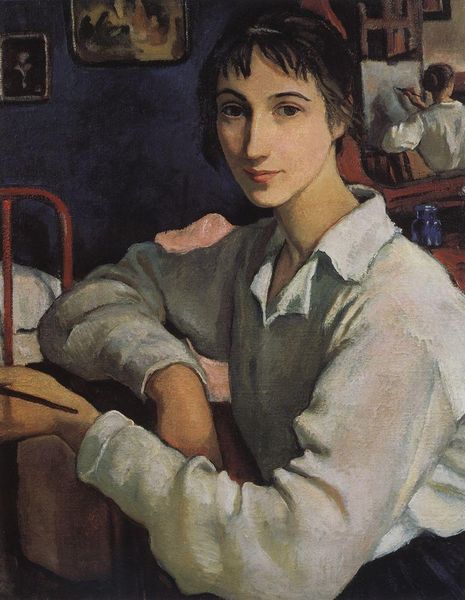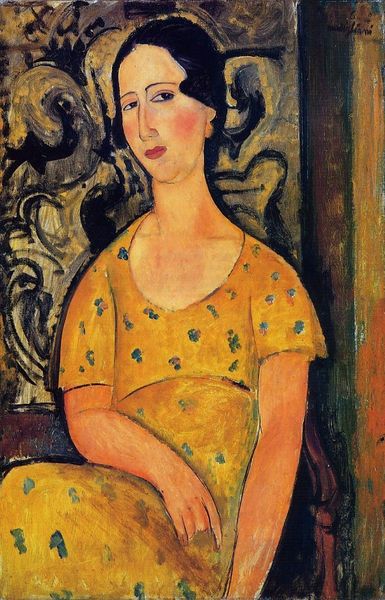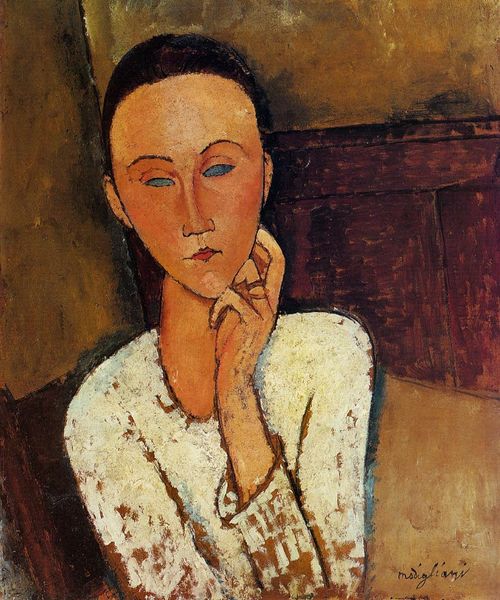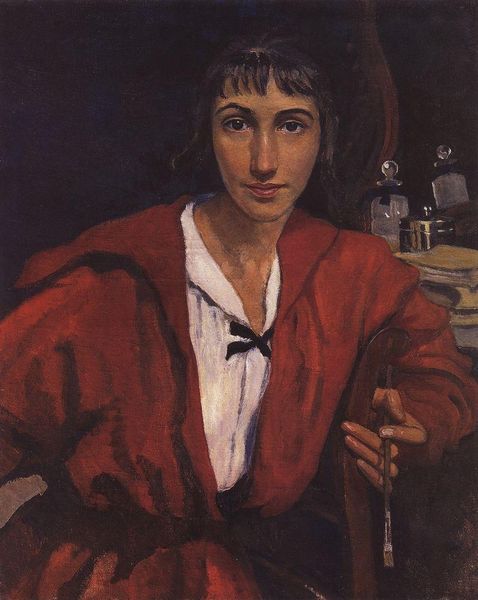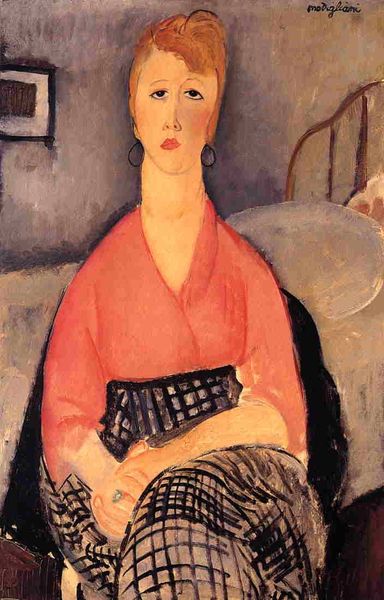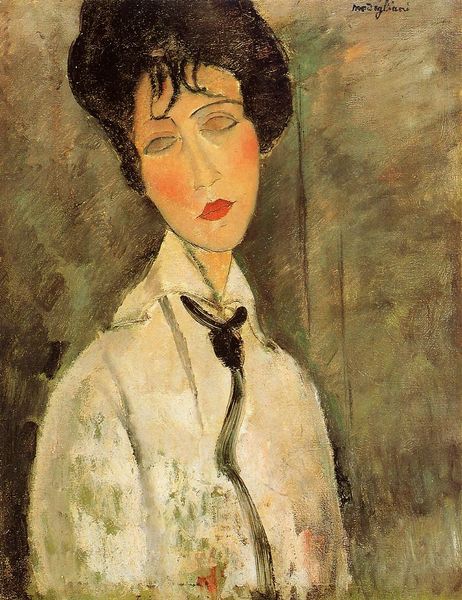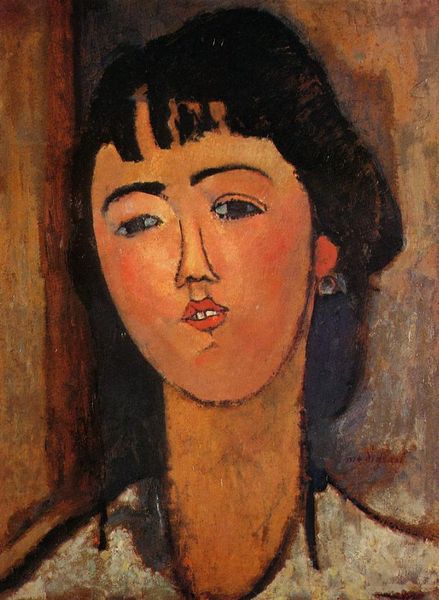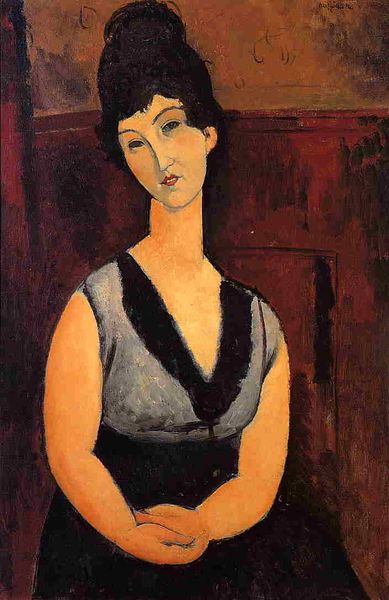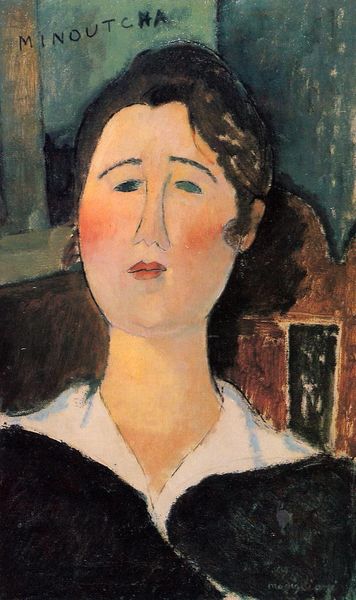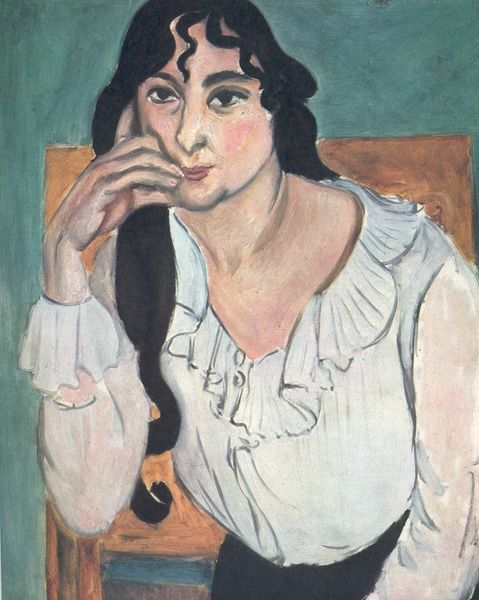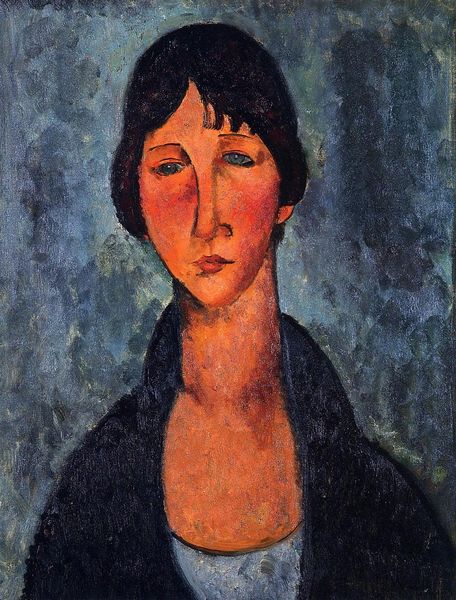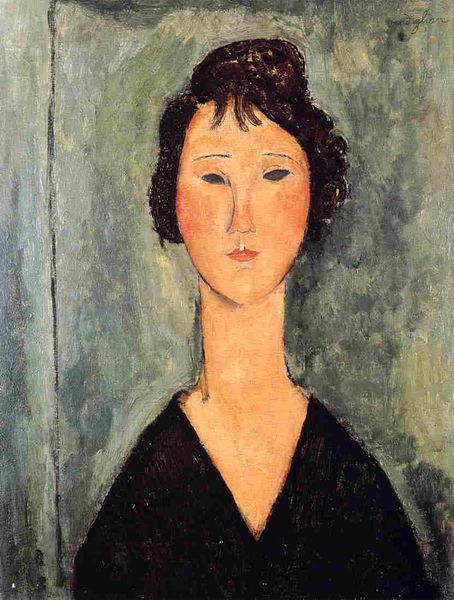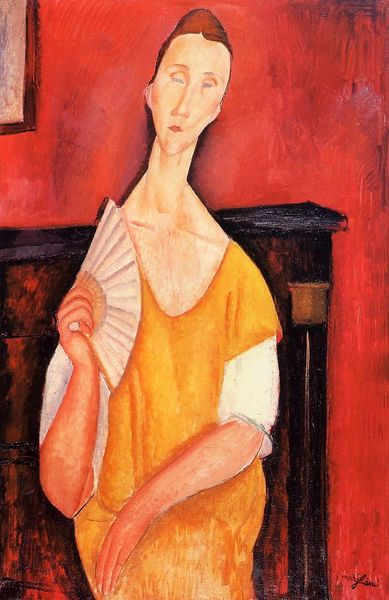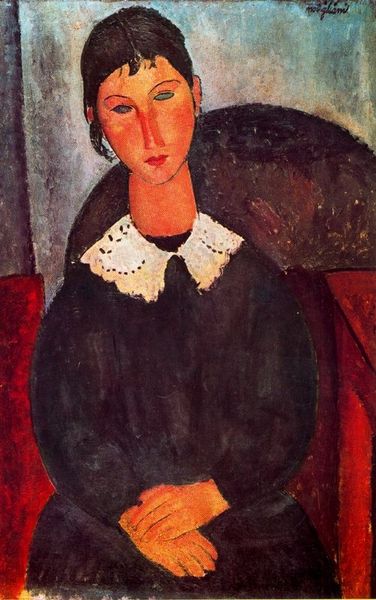
painting, oil-paint
#
portrait
#
self-portrait
#
painting
#
oil-paint
#
figuration
#
oil painting
#
realism
Copyright: Public domain US
Editor: We're looking at Zinaida Serebriakova's Self-Portrait from 1921, rendered in oil paint. I'm struck by the intimacy of this painting, the way she captures her own gaze. How do you see this portrait in terms of its formal composition? Curator: Indeed, the gaze is key. Note how Serebriakova's composition directs our eyes immediately to her face. Consider the structure. The verticality of the brushes in her left hand, juxtaposed against the horizontal brush and what appears to be a canvas in her right, creates a visual tension. The chromatic scale moves subtly. What do you observe about her palette and brushwork? Editor: The colors seem muted, earthy, and the brushstrokes seem quite visible, particularly in the folds of her shirt. It’s not perfectly smooth or blended. Does this relate to her artistic goals? Curator: Precisely. The visible brushstrokes create texture, a sense of immediacy. She rejects a highly polished finish. The palette, restricted to mostly ochre, whites, and blues, directs our eyes. It flattens depth. Is Serebriakova concerned with perfect mimetic representation, or is something else at play? Editor: I think it’s more about capturing a feeling or a moment. It's less about perfect replication. Curator: Precisely. The planes are simplified, almost geometric. How does this impact your reading of the portrait's overall impact? Editor: It gives it a very modern feel, even though it's representational. The geometry strengthens the sense of her presence. It all ties together formally to create this compelling image. Curator: Agreed. Focusing on the form helps reveal her modernity. A successful analysis, I'd say.
Comments
No comments
Be the first to comment and join the conversation on the ultimate creative platform.
